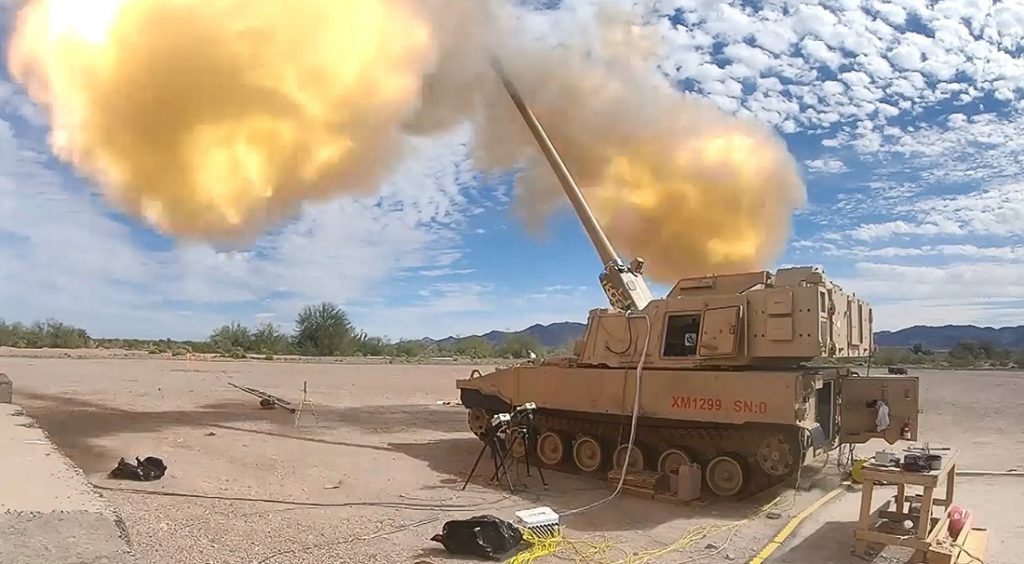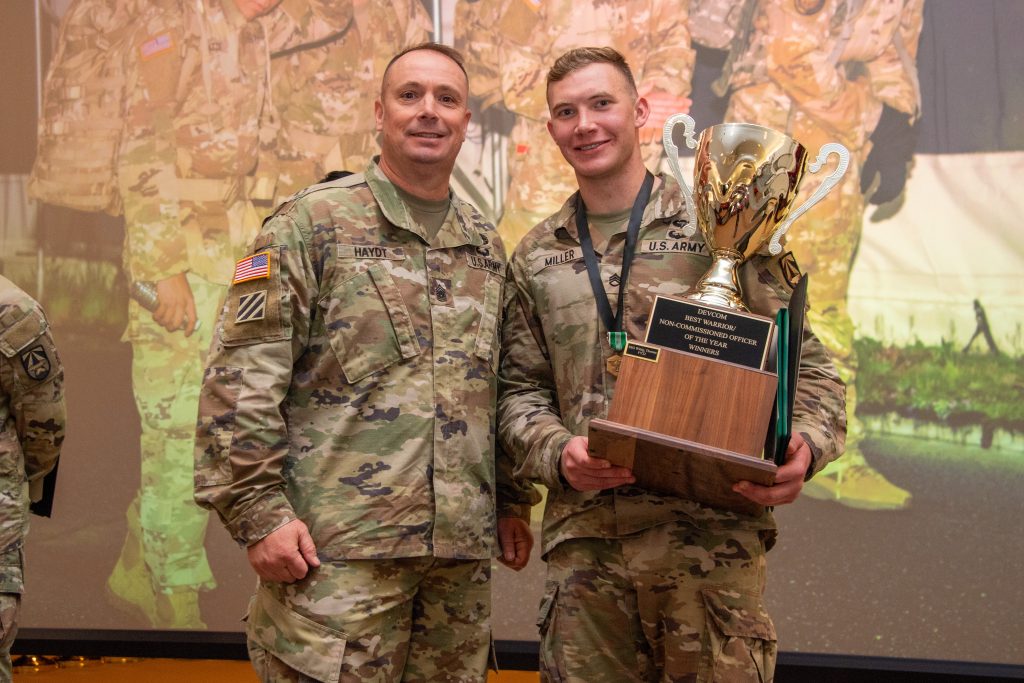Army combat priority takes shape on multiple engineering fronts
August 11, 2021
PICATINNY ARSENAL, N.J. — The objective is clear: increase the range of U.S. Army artillery. In the case of the Extended Range Cannon Artillery (ERCA) system, achieving that goal can encompass multiple lines of engineering expertise for distinct functions, eventually converging to produce the desired product.
The ERCA effort is nested within the Army’s top modernization priority–Long Range Precision Fires. The ERCA design is being led by the U.S. Army Combat Capabilities Development Command Armaments Center, where various engineering teams focus on specific efforts, much like the oars of a college rowing team that individually contribute to the collective momentum.
One such effort involves the object that sits at the open end of the barrel or muzzle. To the casual observer, it may seem an odd appendage that contrasts with the cylindrical share of the barrel. However, the object, called a muzzle brake, performs vital functions. And when it comes to extending artillery range, current versions just won’t do.
The muzzle brake not only minimizes recoil after the cannon is fired, but also reduces blast overpressure. That pressure could create shock waves and cause potential concussions among Soldiers near the blast. Thus, to ensure Soldier safety, blast overpressure can’t exceed a certain level.
“Now that we’re going into extended range systems, the pressures should be even higher,” said Paul J. Bouchard, a senior materials engineer at Watervliet Arsenal in upstate New York, whose work falls under the Armaments Center’s Weapons and Software Engineering Center.
In the case of the muzzle brake, the challenge is to determine a solution to achieve a number of goals: greater strength, durability, lighter weight, and an extended service life that can withstand the demands of more powerful artillery.
The muzzle brake can’t be so heavy that it throws off the balance and stability of the cannon, yet it has to be strong enough to increase yield strength by an additional amount required to achieve extended ranges.
“We’re still determining what alloys to use, but we’re going for a higher strength, higher quality alloy,” Bouchard said of the ongoing design process.
“We use computer fluid dynamics and finite element analysis to design these muzzle brakes to look at the stress distribution as well as that blast overpressure,” Bouchard explained. “We have some design concepts that we have come up with for this extended range system. The ultimate goal will be to produce prototypes that go into the ERCA system for a qualification test.”
The ability to manufacture the finished product that meets specific needs is a vital part of the engineering process. For the muzzle brake, that means using advanced manufacturing techniques to reduce defects, streamline manufacturing and shorten the delivery time.
Traditionally, muzzle brakes were produced using castings because of their relative complex geometry, Bouchard said. Casting is a process in which a liquid material is poured into a mold, which contains a hollow cavity of the desired shape, and then allowed to solidify. But that method also had problems. Cracks would tend to develop during the process that then had to be weld repaired.
“There’s a high scrap rate due to these casting defects opening up during heat treatment,” Bouchard said. “There’s also a limitation on how high of a strength you can achieve with a casting.” Heat treatment provides qualities such as greater strength.
Engineers are exploring two possible solutions: replacing castings with one piece forgings, made possible with advances in machining technology, or forging two halves and then use electron beam welding to create a single piece. Forging involves the shaping of metal using localized compressive forces. The blows are delivered with a hammer or a die.
“We have seen drastic improvements in machining technologies,” Bouchard noted. “Now we have five-axis tooling machines, and they work off a computer program as well. That five-axis head goes in and it can machine to a 3-D model.”
Welding two forged halves with an electron beam has advantages. The process is automated and reduces the need for filler metal that a human welder would typically use.
“Because there’s no filler metal, it really limits the heat input and distortion of a piece,” Bouchard said. “And it’s much more reliable and can be repeated easily since it doesn’t take an operator into account.”
Moreover, electron beam welding can be performed in vacuum, which reduces in the introduction of metal impurities. The Armaments Center is using the DOD’s Manufacturing Technology Program for advancing the use of electron beam welding for muzzle brakes.
With greater efficiency and fewer defects than with castings, switching to forgings and electron beam welding is expected to drastically reduce the time it takes vendors to manufacture and deliver muzzle brakes for eventual fielding. Faster fielding also boosts readiness.

Designing the muzzle brake also entails several considerations.
“What you want is the muzzle brake to last the same life as the tube,” Bouchard said. “So you have a safe fatigue-life that’s established for the tube, and you want the muzzle brake to be at the same level, or slightly exceed that, because you don’t want to be swapping them out once they leave the manufacturing facility.”
A property that engineers seek in a muzzle brake is called toughness. “It essentially means that if it does have a flaw or crack in it, it’ll grow in a controlled manner that’s predictable, and will last a certain number of rounds rather than being brittle and failing prematurely,” Bouchard said.
While the design of the muzzle brake requires assessing a number of variables and processes, it is only a small part of an intricate, multilayered system such as ERCA, a system-of-systems whose development also includes evaluating rounds and propellants among many other considerations.
“So it’s this big team where everything has to come together,” he added. “And once that’s finalized, then you have to go produce these and do a series of qualification tests to establish a safe life for the system. Then you get into low rate initial production and then full rates. So it’s a complicated program with a lot of moving parts. There’s no doubt about it.”



